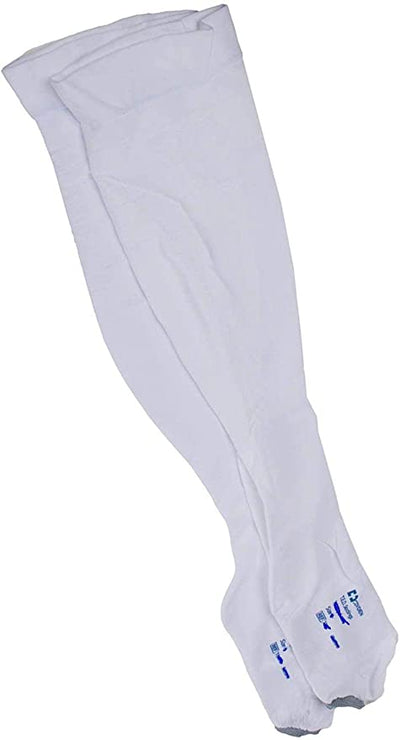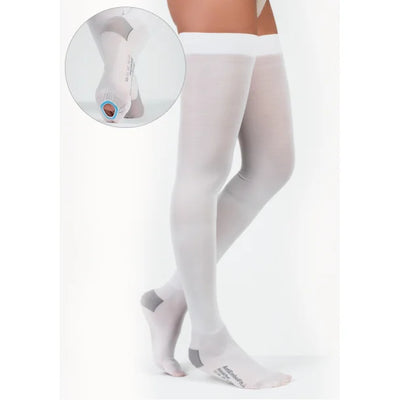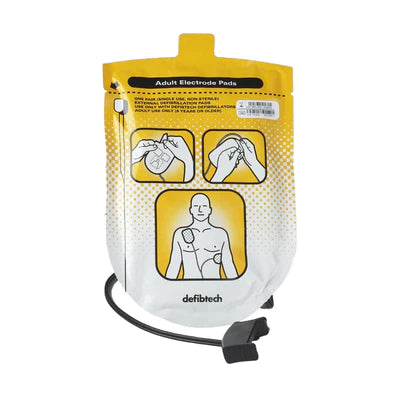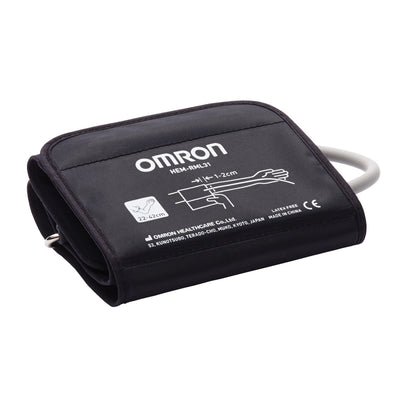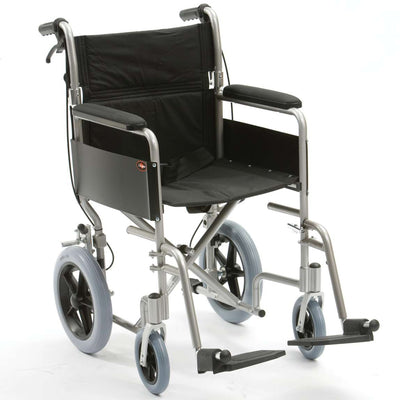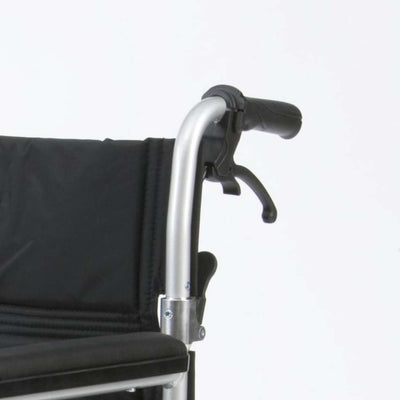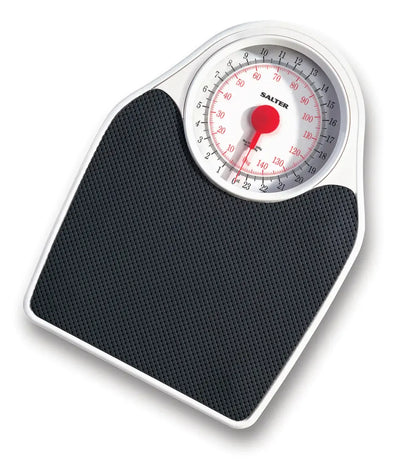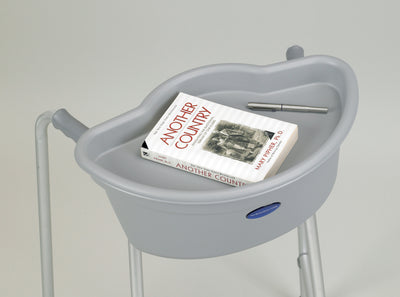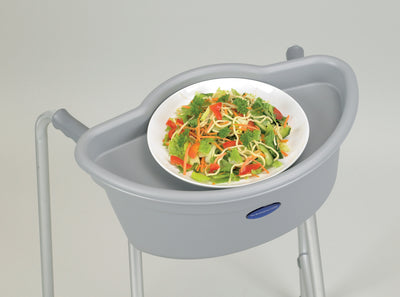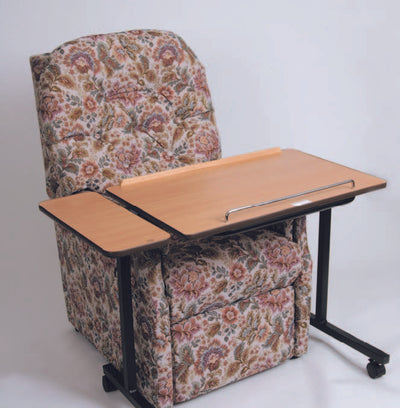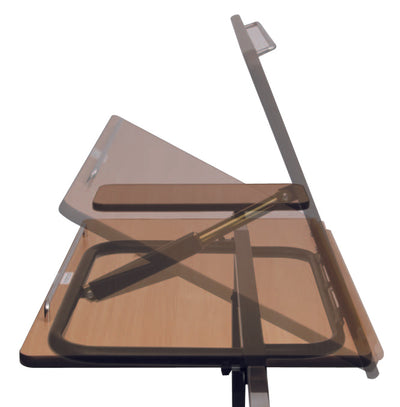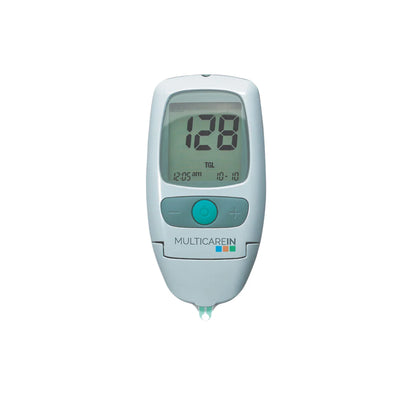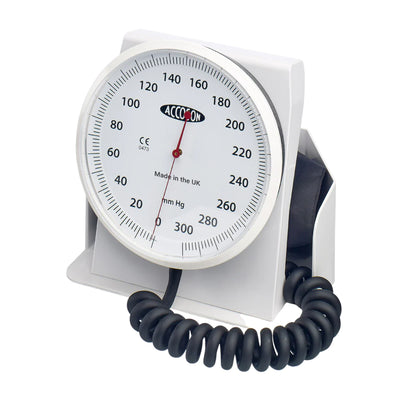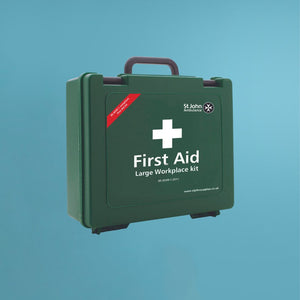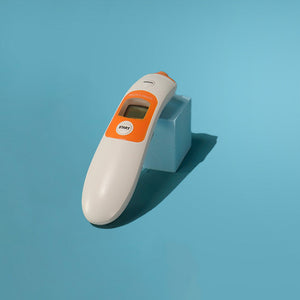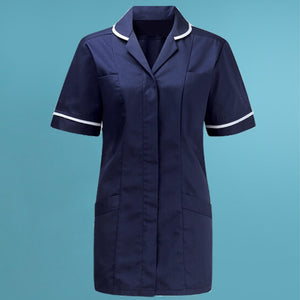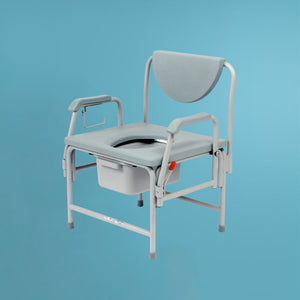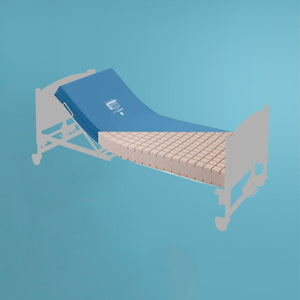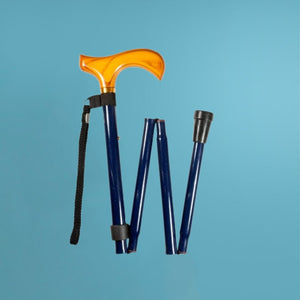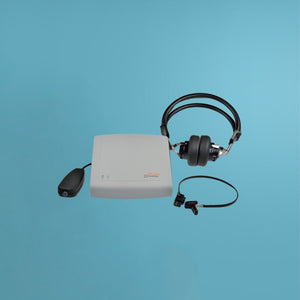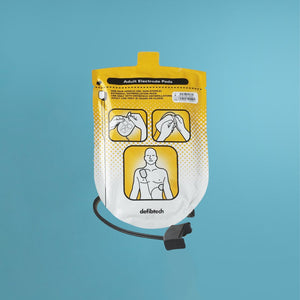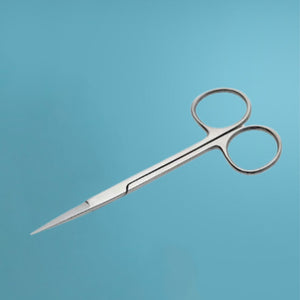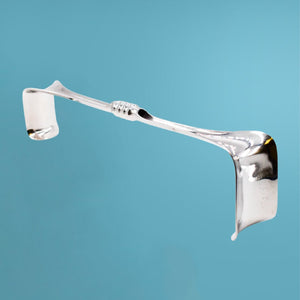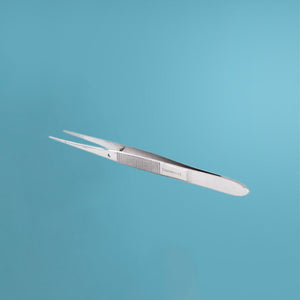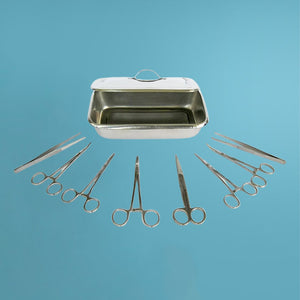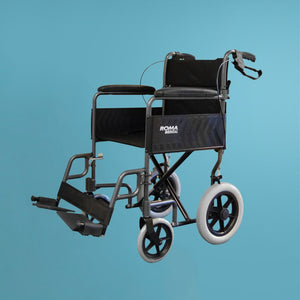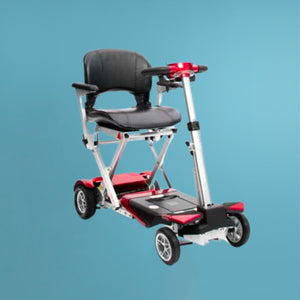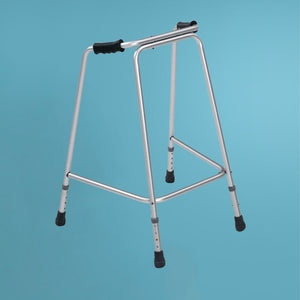Blogs
Discover newfound freedom through enhanced mobility solutions, transforming the way you move and live.
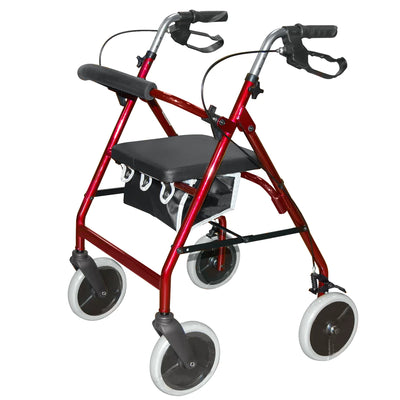
How to Safely Fold Your Walking Frame or Rollator
18.07.2024
Folding Your Walking Frame or Rollator
If you own a rollator walker you might want to fold it for storage or travel from time to time.
At first this might seem like a complicated job, but with practice and patience it will become an easy task and one that you should be able to tackle on your own - making you even more independent and able to travel around.
Before we start you’ll need to know what kind of rollator or walker you have:
Side-folding rollator walkers can stand by themselves when folded, which gives them an edge over them compared to traditional rollators.
A traditional rollator is unstable when folded, so you may have trouble leaning them against a wall. Folding and keeping them folded while loading them onto a car boot is more challenging.
You will need to consult the manufacturer instructions for your specific walker but, in general, you can follow these steps to get practising and learning how to fold your rollator or walking frame:
Position the rollator in front of you, making sure the brakes are engaged or locked to prevent it from rolling.
Locate the release mechanism or levers on the rollator. These are usually located near the handlebars or on the sides of the frame.
Depending on the specific model, there may be one or two release mechanisms. If there are two, they are typically located on each side of the frame.
Hold onto the handlebars firmly with one hand while using your other hand to engage the release mechanism. This may involve lifting or pulling levers, pressing buttons, or sliding mechanisms.
As you engage the release mechanism, gently fold the rollator inward, towards yourself. Be careful not to pinch your fingers or catch any loose clothing in the folding mechanism.
Continue folding until the rollator is compact and the sides of the frame are close together. With some models you may have a locking mechanism to secure the rollator in its folded position.
Once folded, you can use the rollator's built-in handle or a designated carrying handle, if available, to lift and transport it.
Be mindful that if you are using a traditional walker or rollator it will not be stable when folded unless it’s leaning against a solid structure like a wall or piece of furniture. Don’t be tempted to use it as a support for yourself.
You might want to have someone with you for the first few times you try to fold your rollator, but it won’t be long before this is a task you can undertake on your own.
For more help, contact us here at Mediworld. We have almost 50 years of experience in Mobility Aids and we’re here to help with any of your queries regarding buying and using your walking frame or rollator.
July 2023
Learn More Now
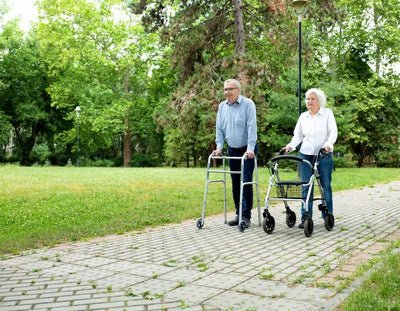
How to Correctly Use A Walking Frame
18.07.2024
A walking frame, also known as a walker or a Zimmer frame, is a mobility aid designed to provide support and stability to those with mobility issues, usually the elderly or frail.
When used correctly a walking frame can greatly improve the elderly person’s ability to remain independent for longer and to continue getting around with more confidence.
Here's a general guide on best practices for using a walking frame:
Adjust the Height: Most walking frames have adjustable height settings. Stand upright with your shoes on and adjust the height of the frame so that the handles are level with your wrists when your arms are comfortably relaxed at your sides.
Stand in the Frame: Position yourself in the middle of the walking frame, facing forward. Hold onto the handles with a firm grip, keeping your elbows slightly bent.
Take Small Steps: Move the walking frame slightly forward, keeping it firmly on the ground. Take small, controlled steps by lifting the frame and placing it slightly ahead of you. Make sure to keep your feet within the frame's width for stability.
Weight Distribution: When stepping forward, shift your weight onto the walking frame and then step forward with your weaker or affected leg. Next, bring your stronger leg forward to meet the weaker leg. Repeat this step-by-step movement.
Stability and Posture: Keep your back straight and engage your core muscles for stability. Take your time and maintain a slow, steady pace. Avoid leaning too far forward or backward, as this can compromise your balance.
Turning: To turn with a walking frame, stop walking and bring the frame slightly closer to your body. Pivot on your toes, using the frame for support, and turn in the desired direction. Continue walking forward after the turn.
Sitting and Standing: When sitting, find a stable chair or surface and position the walking frame in front of you. Hold onto the frame for support while slowly lowering yourself into the chair. To stand up, push yourself up from the chair using the frame for support.
Sitting on a Walker or Rollator with a seat: If your walker or rollator has a seat, apply and lock the brakes before you sit down. Please make sure the rollator comes to a stop on a flat surface and it is well-balanced before attempting to sit down. For added stability, push the walker up to a wall or secure piece of furniture with the open seat facing you. Turn around with your back towards the seat, hold onto the handles to support yourself as you sit down.
Obstacles and Stairs: Be cautious when encountering obstacles or stairs. If there's an obstacle, stop and assess the situation. Lift the frame over the obstacle or find an alternative path. For stairs, it's generally recommended to use a stair lift or have someone assist you, as using a walking frame or rollator on stairs can be unsafe.
Practice and Confidence: If you have lost confidence in walking, but now have a walking frame to assist you, it is recommended that you slowly and gradually increase the distance that you walk to build up your exercise tolerance. Having someone with you initially may help to increase your confidence.
Always consult with a healthcare professional, such as a physiotherapist or occupational therapist, who can provide guidance specific to your needs and help you optimize the use of a walking frame for your mobility requirements.
July 2023
Learn More Now
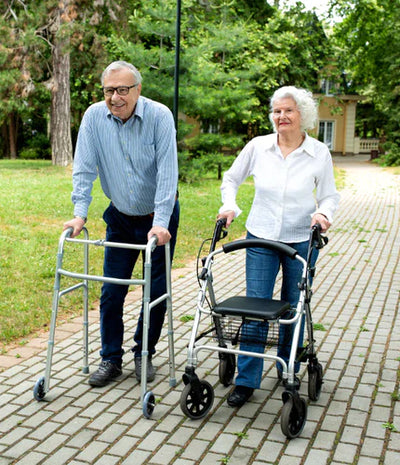
Making Friends with your Walking Aid
25.09.2023
As we age, we may need a walking aid to help us move around more safely and comfortably. While adjusting to using a walking aid can be challenging, it doesn't have to be a lonely experience. In fact, your walking aid can become your new best friend!
There is a misconception that if you use walking assistance, you are somehow weaker, less capable, and possibly your value in the world is dwindling. Also, we are predisposed to think that using a walking stick or other mobility assistance is a sign of an oncoming infirmity or an acknowledgement of defeat. However, we at Mediworld don't buy into this.
It's completely natural to feel apprehensive about this new phase. Nevertheless, your walking aid is more than just a tool; it's a friend eager to accompany you on life's beautiful journey.
Learning how to properly use and care for your walking aid will enhance your mobility and independence while also cultivating a positive relationship with your new companion. In this blog, we'll explore some tips for making friends with your walking aid and making the most of your mobility device. Let's get cracking!
The Difficulties That Come With Ageing
As the years pass, our bodies undergo natural wear and tear, leading to reduced mobility, aches, and pains. Simple tasks that were once effortless become more daunting, and the need for assistance may arise.
However, when the time comes that you start to notice you need just a little bit of help with walking and getting around, the best move is to embrace it with open arms and seek advice on what walking stick or mobility aid would improve your well-being immediately.
The Joy of Having a Walking Companion
In the long years we have been in business, we have often come across individuals who are hesitant to embrace the use of walking aids due to concerns about appearing more infirm than they truly are. However, while they grapple with the challenges of reduced mobility and struggle to maintain their independence, they may end up sacrificing activities they once enjoyed, leading to a gradual decline in their overall well-being and fitness.
Viewing a walking aid as a symbol of infirmity is a misinterpretation. On the contrary, it signifies a conscious choice to lead an active and safe life as an older individual. Choosing to use a walking aid is a powerful statement of determination and an unwavering desire to remain engaged in life's adventures.
It's an acknowledgement that they value their well-being and are willing to take the necessary steps to continue enjoying life to the fullest. We firmly believe that embracing a walking aid demonstrates courage and strength, allowing individuals to reclaim their independence and pursue the activities they love without compromising on safety.
Instead of seeing it as a hindrance, let's celebrate those who choose to be active and resilient instead of passive and resigned, those who make progress despite limitations. We can encourage a positive outlook on ageing by changing how people view walking aids and promoting activities and engagements around them.
The Transformative Effects of Using a Walking Aid
Embracing the use of a walking aid has amazing effects. These effects can be seen in various areas of our lives, and they include:
First and foremost, your confidence to get out and walk will soar to new heights. With the sturdy support of your walking aid, you'll regain the assurance and stability needed to explore the world around you without the constant fear of stumbling or falling. As that fear diminishes, so too will the risk of accidents, allowing you to move with greater freedom and peace of mind.
Your walking aid will become a trusted companion on your journey towards better fitness. With each step you take, you'll be strengthening your muscles, improving your balance, and boosting your overall well-being. The simple act of walking will no longer feel like a task but rather a delightful opportunity to improve your health.
The use of a walking aid will reintroduce you to the joys of independence. No longer confined to a sedentary lifestyle, you'll find yourself venturing out more often, pursuing hobbies, visiting friends, and exploring the outdoors with newfound enthusiasm. Your walking aid will become a symbol of liberation, opening doors to a world of possibilities that you might have once thought were beyond reach.
You will feel like your old self again—the vibrant and adventurous individual you've always been. Your walking aid will become a tool that enables you to reclaim the activities and experiences that once brought you joy. It's like rekindling a long-lost friendship as you rediscover the sense of fulfilment that comes with living life to the fullest.
In the end, the decision to adopt a walking aid is not about giving in to limitations; it's about embracing newfound opportunities and embracing life with renewed vigour. It's a reminder that life is a journey filled with twists and turns, and sometimes we need a helping hand to navigate the path.
How to Care for Your Walking Aid
Caring for your walking aid is essential to ensure its longevity and continued support in your daily life. There are countless ways you can care for your walking aid, but these few pointers mentioned below are easy, simple, and on-the-go methods to care for your walking companion.
These include:
Regularly inspecting and cleaning your walking aid will keep it in good condition.
Checking for indicators of wear and tear and promptly addressing any issues to prevent potential accidents.
When not in use, keep your walking aid in a secure and dry area and avoid exposing it to high temperatures or humidity.
If your walking aid has adjustable features, regularly check and adjust them as needed for optimal comfort and support.
Remember, a well-maintained walking aid will continue to be your reliable companion in maintaining mobility and independence.
In all, don't hesitate to take that step, both literally and figuratively, towards a more confident, independent, and fulfilling life with your walking aid by your side.
Remember, it's not just an assistive device; it's a key to unlocking the doors of possibility and rediscovering the essence of who you truly are.
So, if you need help finding the right walking aid for your life, whatever stage you're at, we'd be glad to help. Let's get you back on your feet. We're always here to help, so get in touch today.
For all your Medical and Home-care supplies, give us a call at Mediworld. We have over 40 years of experience in medical, surgical, mobility and home health supplies. We're always on hand to chat if you need support or advice.
Also, remember to check out our health blogs, where you get information at its finest!
Learn More Now
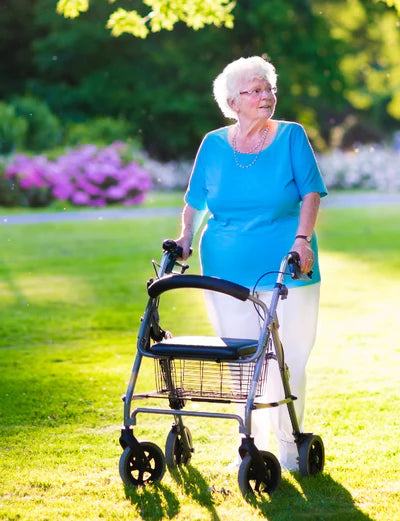
Guide to Buying and Using a Wheeled Walker
24.10.2023
If you or someone you know has mobility issues that make it difficult to walk or move around, a walking aid might help.
There is a huge variety of walking aids available from walking sticks and walking frames to wheelchairs, but if you’re still able to support your own weight but find a standard stick or frame too difficult to manoeuvre, it’s possible that a rollator or walking frame with wheels will make it easier for you to get around.
Benefits of Wheeled Walkers
Wheeled walkers can keep a person with mobility issues independent and able to get about and continue their daily schedules much easier.
Wheeled walkers or rollators reduce the effort of getting around as the user expends less energy walking while using a walker.
A two-wheeled walker has wheels fitting to the bottom of the frame on the front two legs, whilst the back two legs have rubber ferrules or stoppers fitted. Users of a two-wheeled walker will perhaps need stability support for moving around and might need to lean their weight onto the walker.
Three and four-wheeled walkers have wheels on each of the legs, sometimes with off-road tyres, and are ideal for someone who needs mobility support but doesn’t need to lean on the walker for balance.
Wheeled walkers can come in a variety of colours, some have handy trays for transporting food and meals around the house, and many can be folded for easy storage and transportation.
Make sure your Walker Fits Well
Most wheeled walking frames will be adjustable in height to suit different users. Before you use your wheeled walker you’ll need to make sure that it fits your arms comfortably. Using your walker at the wrong height will put stress on your shoulders/back and could lead to discomfort and injury.
To tell if your walker is the correct height, step inside your walker and:
Check your elbow bend. Keeping your shoulders relaxed, place your hands on the grips. Your elbows should bend at a comfortable angle of about 15 degrees.
Check your wrist height. Stand inside the walker and relax your arms at your sides. The top of the walker grip should line up with the crease on the inside of your wrist
How to Walk with your New Wheeled Walker
Once you’ve adjusted the height correctly, take some time to get used to your wheels and get confident with using it while walking.
Start by taking a small step into the walking frame and keep it close to your body.
If it is a 3 or 4 wheeled walker ensure that the brake is on before use.
Keep it close to your body and don’t outstretch your arms or you’ll lose control.
Take small, considered steps and gently push the frame as you move forward.
Don’t try to lift the walker. If it has two wheels at the front you will need to tip it slightly forward to move.
If you need to place weight on the walker as you move, start by pushing the walker about one step ahead of you. Keep your back upright. Don't hunch over the walker.
Be careful when using your walker on surfaces that are slippery, carpeted or uneven. Always wear low-heeled shoes with good grips on the soles.
Maintaining your Wheeled Walker
Whatever walker you choose you should be sure to maintain it. Check that the brakes are in good order, replace broken or worn out rubber caps, grips or wheels before they completely break.
To get even more out of your wheeled walker you might want to add some useful accessories to help with getting around, like a handy tray or storage bag for shopping or outdoor clothing.
Need more help? We're always here to help so get in touch today.
For all your Medical and Homecare supplies give us a call at Mediworld.
We have over 40 years experience in medical, surgical, mobility and home health supplies and we're always on hand to chat if you need support or advice and don't forget to read our other great health blogs!
March 2023
Learn More Now

Guide to Choosing a Walking Aid
26.09.2023
We, at Mediworld, help people to find the most suitable walking aids for their needs everyday. Whether it’s to aid recovery from an injury or operation, or for longer term walking support we help to make sure the correct fit, support and comfort to get you back up and mobile, and staying active everyday.
Different styles of walking aids provide different levels of support and mobility practices. So here’s a quick guide to just some of the walking aids that are available to keep you enjoying life to the full.
Single-Footed Walking Stick
A walking stick, or cane, with a single foot point is the most simple walking support available. It provides a little extra support and balance when a person has perhaps become a bit weaker in their movements, or is prone to stumbles, slips and falls. It’s also a useful support for walkers who enjoy hills, or walking on uneven ground.
Walking sticks reduce fatigue on the body by redistributing the body’s weight. Instead of all your weight coming down on your back, hips and knees, a walking stick displaces some of your weight from your back and lower body and supports it through your arms and the stick itself.
This can reduce wear and tear on your joints and muscles, which can help people with arthritis or back problems.
They can take a bit of getting used to but the general rule is that by holding the cane in the hand of your ‘strong’ side, you lift the stick, place it ahead of you and allow it to support your body’s weight with your arms as you move.
Make sure you have your stick fitted properly, as using a stick at the wrong height can cause other issues with your posture over time.
Walking sticks come in a huge variety of colours and styles, can be adjusted folded away and even come with a handy seat attached if you like to stop to enjoy the view when you’re out and about.
Walkers and Frames
A three or four legged walking frame provides much more support than the one footed walking stick and as such is more appropriate for those with poor balance, ailing leg strength and less upper body movement or strength.
The standard walker is lifted and moved forward with each step, so it does require a level of muscle power to operate.
Often the basic walking frame will be used as a temporary measure if someone is recovering from an injury, or if they’re having some difficulties with balance when staying mobile. They are very lightweight and a folding walking frame is very easy to transport if needs be.
They can also be fitted with a walking frame caddy to help with transporting items around the house or for carrying small bags/items when moving outdoors.
Rollators and Wheeled Walking Frames
Wheeled walkers are fitted with 4-wheels. They come in lots of different configurations and provide stability whilst still being easy to move. If balance is an issue, though, the standard no-wheeled walker might be the best option to avoid falls.
Wheeled walking frames do, however, allow much smoother movement to those who can handle them and are a great, longer term option for the active person who needs more support whilst out and about. And because of their stronger frame build, they can support a certain amount of body weight, allowing the user to feel less fatigue and therefore use it for longer.
The great thing about the wheeled walkers or rollators is that they come with a seat attached that allows for regular breaks while out and about. They’re also useful for storage so can be used for shopping and daily chores.
Contrary to the often-felt stigma attached to the use of a walking aid like a walking frame or rollator, the level of independence and freedom offered to users is often beyond their expectations and for those who have been house-bound as a result of their mobility issues, a walking aid really can provide a new lease of life.
If you need any help with finding the right walking aid for you or a loved one, we can help.
Do get in touch today.
For all your Medical and Homecare supplies give us a call at Mediworld.
We have over 40 years experience in medical, surgical, mobility and home health supplies and we're always on hand to chat if you need support or advice and don't forget to read our other great health blogs!
September 2022
Learn More Now
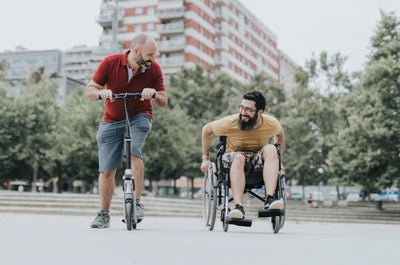
5 Exercises for Wheelchair Users
24.10.2023
We have many customers who use wheelchairs, whether permanently or for periods throughout the day, and we often hear how difficult it can be for them to take part in regular exercise routines. Around 85% of wheelchair users are not paralysed and can use their arms and legs to some extent to exercise, so there's every reason for them to keep their bodies strong and in good shape every day.
The time has come for a wheelchair-using Joe Wicks to emerge! But for now we’ve brought together some great exercises for wheelchair users to have a go at.
Getting started
If you’re new to exercising you will want to ease yourself slowly into a new routine to avoid any chance of injury. However, regular exercising in your wheelchair will be hugely beneficial to you. With just a few sessions you’ll start to notice:
Higher energy levels
Muscle begin to get stronger
Weight loss
Better well being - physical and mental
Positive mindset
Better sleep
With this in mind, here are 5 great exercises for wheelchair users to start doing today.
1) Arms and Shoulder Strength
Upper body strength is really important for wheelchair users who propel and push their own chair around. But even for joystick users, maintaining good arm and shoulder strength is essential for posture, pain relief and well being.
Start by sitting up straight in your chair.
Hold your arms out straight in front of you and position your hands as if holding an imaginary rowing machine.
Pull your arms back strongly towards your body until you feel your shoulder blades coming together.
Repeat 10 times.
For extra strength try this exercise with some extra weights - you could use hand dumbbells or even tins of beans for extra resistance!
For an alternative on this, wrap an exercise band around a solid post (for example, a stair post or outdoor metal railing). Hold an end of the band in each hand and follow the exercise by pulling the band towards you. The exercise band will add some extra resistance and build strength quickly.
2) The Core Twist
This is a great exercise for working and strengthening core stomach muscles.
Sit up straight in your chair
Put your arms in front of you with your elbows tucked in close to your side (a little bit like a robot)
Squeeze your core muscles in tightly (suck in your tummy!) and turn your whole body from the waist to the right as far as you can go. You will feel a strong movement, but do stop if there is any pain.
Hold the pose for a couple of breaths then return to centre and repeat on the left side.
Repeat 10 times on each side
3) Chest Squeeze
Sit up straight in your chair and hold a football, exercise ball or even a balloon up to your chest.
Squeeze the ball hard (be careful with the balloon!) to start activating your chest muscles. The harder you squeeze the harder your muscles will be working.
Push the ball out in front of you until your elbows are nearly straight, and continue to squeeze the ball while you do so.
Pull the ball (or balloon) back towards your chest and repeat 10 times. Remember to focus and do this exercise slowly to really make the muscle work.
If you don’t have a ball, you can do this exercise with your hands pressed together instead.
4) Knee Lifts
If you can use your legs, this exercise is brilliant for strengthening your thighs and calves.Stronger legs means greater mobility - and if you’re able to manoeuvre yourself in and out of your chair, you’ll improve your stability and safety while doing this if you’re legs are in good shape.
Again sit up straight in your chair or wheelchair and engage your core, stomach muscles.
Put your feet flat on the ground or flat on your footplate.
Slowly lift one of your legs as far as you can comfortably manage and bend your knee back towards you.
Hold it for 5 seconds (of a couple of breaths) before lowering your foot down and repeating with the other leg.
Repeat 10 times with each leg
5) Cycling
For extra leg strengthening with a bit of cardio thrown in you could try using a pedal exerciser.
Place the pedal exerciser flat on the ground
Sit up straight in your wheelchair or chair and place your feet into the pedals.
Start pedalling while keeping your body sitting upright and with your core engaged.
You can pedal for just 5 minutes or for 30 - 60 minutes if you build up to this.
Try to vary your speeds for added interest, and to test your cardio endurance.
So there you have it. Be sure to check with your GP or consultant before you start any new exercise regime and always stop if you feel pain.
For more help get in touch today.
We have over 40 years experience in medical, surgical, mobility and home health supplies and we're always on hand to chat if you need support or advice and don't forget to read our other great health blogs!
March 2022
Learn More Now
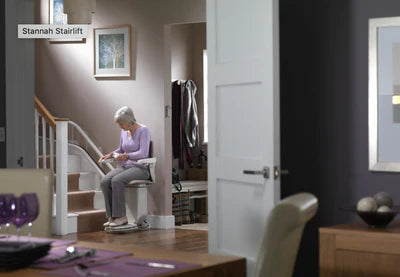
Guide to buying a stairlift
24.10.2023
We read an article recently about an elderly gentleman whose life had been transformed by installing a simple adaptation to his home - namely a stairlift. His ability to live independently in his own home, despite suffering from mobility issues, was greatly improved. He could go up and down the staircase in his house to reach his bedroom without any struggle, his family were less worried that he might suffer a fall while managing his two storey house and, crucially, he removed the need for an expensive or stressful move away from his home to a bungalow or ground floor flat.
It's fair to say that the creation of stairlifts to fit a variety of staircases both in and outside the house, has made a huge difference in the way elderly or less mobile people navigate their homes.
So if you're ready to take the next step and install a stairlift, here's our guide to buying the right stairlift for your home and your needs.
Types of Stairlift
Essentially there are two types of indoor stairlifts - straight and curved - and they're designed to fit those shapes of staircases in the home.
Straight stairlifts are, as you might imagine, less expensive and easier to install as they run straight up and down a straight rail with the seat neatly attached to this.
Curved stairlifts require a more bespoke set up depending on the curves, corners and winds of your staircase. As suggested, these do take longer to install and can be more expensive due to the bespoke nature of the fitting and manufacture. However, as many homes have stairs with corners, these are common and regularly made and fitted in homes so don't let your unusually shaped staircase put you off.
Stairlift Features
The Seat:
When buying your chair you'll want to make sure the seat is correctly fitted and adjusted for you.
For optimum comfort while you're being transferred from the bottom to the top of your staircase you'll need to make sure the seat is side enough for you to sit comfortably on.
You'll also need to check that the seat can be adjusted to the correct height to ensure it's easy and you're safe when getting in and out of the chair.
A swivel seat that can pivot to allow easier access on and off is a good feature to include in your choice of chair.
The Footrest:
You'll need a well positioned footrest to hold your feet in place while you travel up and down the staircase. A powered foot rest is useful as it will fold itself away when the stairlift is not in use, leaving the staircase and landing areas clear for others to walk up and down the stairs without any trip hazards in the way.
Safety features:
You might want to consider a stairlift with built-in obstruction sensors. These can be incredibly useful if there are any hazards blocking the rails for example. In the case of an obstruction, the lift will come to a complete stop if there is anything blocking it, avoiding the scenario where there is unexpected damage and costly repairs.
A seatbelt is another vital safety feature to consider.
Is it expensive to run a stairlift?
Surprisingly, a stairlift is very economical to run and, once installed, is cheaper to run than many other household appliances. The setup is powered by batteries that automatically charge when the stair is docked. This allows the system to hold onto power in the event of an electricity outage, so it can still be used in an emergency.
What's the best make of stairlift?
There are a number of brands specialising in indoor stairlifts in the UK, but for reliability and great customer service we, at Mediworld Ltd, wouldn't hesitate to recommend both Stannah and Acorn.
Stannah has sold over 700,000 products worldwide since 1867, they are a British, family owned and run business producing stairlifts and homelifts for the UK and around the world.
Acorn have numerous awards and accreditations including the "Buy with confidence" award from Trading Standards and have the "ease of use" award from the Arthritis foundation.
Need more help?
Buying a stairlift can be a big decision so to help with this, we have a stairlift demonstration unit within our store for you to try. Due to the current pandemic we are operating by appointment only, so please call 020 8764 1806 to arrange your demonstration.
We're always here to help so get in touch today.
For all your Medical and Homecare supplies give us a call at Mediworld.
We have over 40 years experience in medical, surgical, mobility and home health supplies and we're always on hand to chat if you need support or advice. Follow us on Twitter and Facebook and don't forget to read our other great health blogs!
Learn More Now
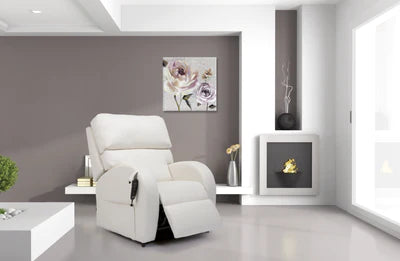
Should I buy a Rise & Recliner chair?
24.10.2023
If you’re at the stage where getting up from your living room chair is causing you no end of trouble or perhaps you’re suffering from arthritis, MS or other mobility issues, then it might be time to start considering investing in a rise & recliner chair.
Perhaps you can’t get comfortable when you sit down, no matter what kind of chair you’re in or how many cushions and back supports you’re using. Maybe your knees, hips, back and sides all ache and you’re no longer confidently able to support yourself when moving from a seated to standing position (or the other way around).
In all of these cases, a rise and recliner chair can improve your life and add that extra level of comfort when you have trouble getting in and out of a conventional chair at home.
So read on for our guide to buying a rise and recliner chair of your own.
The Benefits of Using a Recliner Chair
- Mobility – Having a rise and recliner chair gives you comfort and support whenever you sit and whenever you transition from sitting to standing. For many older people, this chair helps them to stand easier as the transition has been smoother and slower, and this action then reduces the risk of falling and injuries in the home.
The best rise and recliner chairs are motor operated so they gently transition & support you from one position to the next, and can offer a variety of sitting positions that can be achieved with just a push of a button - allowing you to switch position anytime you need to.
- Comfort - As well as offering a variety of sitting positions, rise and recliner chairs can also offer a snooze position, allowing you to lie flatter for a more comfortable nap.
- Pressure relief - sitting in a well supported, comfortable position helps to take the pressure away from your already aching joints, allowing them to rest and recover. A well supported rise and recliner chair can be hugely beneficial in this case for arthritis sufferers or people with chronic joint pain.
It is also useful if you find that, for age or health reasons, you’re sitting down for much of the day. Long hours spent seated can lead to the development of painful pressure sores which can take a long time to heal. By having a riser recliner chair, you can alter your position and take the pressure off the different parts of your body to help avoid developing sores.
- Independence - Many elderly people are ashamed to admit that they need help getting in and out of a chair. Some might even sit for much longer than they need or want to, to avoid asking for help, which can lead to many health and wellbeing problems. A rise and recliner chair keeps you independent for much longer, allowing you to dictate exactly how and when you sit in the chair and avoiding the need for embarrassment or help.
Which rise and recliner chair should I buy?
Although there is a wide variety of chairs on the market, the two best options to consider would be a single motor chair or a dual motor chair.
Single Motor Chair - single motor rise and recliner chairs have one in-built motor that works the back and footrest simultaneously. So when the backrest is reclined the footrest will be risen. Single motor chairs are generally the cheaper options which makes them good, entry-level chairs. However, as you might expect, they do come with fewer options in terms of colours and fabrics, as well as fewer positions and options on board - while this might be less attractive for arthritis sufferers looking for a more comfortable chair, it could be an advantage for some users who might struggle with using complicated remote controls and devices.
Dual Motor Chair - dual motor recliner chairs have two or more motors which work the back and footrest independently, offering a greater variety of seating positions for the user. The extra functions on the dual motor chairs make them much more suitable for people with moderate to severe mobility issues as they offer a greater variety of subtly different seating, lying and rising positions. Generally speaking, double motor mobility chairs are more expensive than single motors, but as both styles of chair are an investment, it’s best to go with the chair that offers the right options for you.
Depending on the model, you can find both single and double motor chairs with a riser function which tips the seat base forward allowing the occupant to stand up.
Time to invest?
Today, chairs are stylish and come in a range of colours and fabrics, meaning there is a chair to suit every home. The other good news is that rise and recliner chairs are now very nice looking pieces of furniture that come in a huge variety of styles, colour and fabric - gone are the days when they wouldn’t have looked out of place in a hospital corridor or nursing home lounge.
While it might seem like an expensive purchase, without a doubt, the benefits of using a rise and recliner chair far outweigh the cost of buying one.
Need more help to find the right recliner chair for your home? We're always here to help so get in touch today.
For all your Medical and Homecare supplies give us a call at Mediworld.
We have over 40 years experience in medical, surgical, mobility and home health supplies and we're always on hand to chat if you need support or advice. Follow us on Twitter and Facebook and don't forget to read our other great health blogs!
Learn More Now
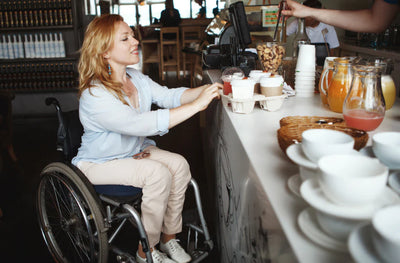
Making your business more wheelchair accessible
18.07.2024
At the time of writing this week’s blog, the vast majority of cafes and restaurants across the globe are closed to sit-in customers because of the Covid-19 pandemic. But, we’re optimistic that the light at the end of the tunnel is getting closer and the day when we can start eating out again is coming!
If you’re a cafe or restaurant owner, you’re possibly spending this time refurbishing or making tweaks to your establishment ready for opening day. While you’re thinking about some new paint colours and how to update your menu, don’t forget to make sure your business is accessible to everyone who wants to use it, and is in line with the UK Government’s rules for disabled access to businesses.
Follow our simple, budget-friendly changes to make to your business is offering better access for disabled persons who want to come and enjoy your hospitality.
Provide disabled access ramps for doorways
If accessing the front door to your establishment means climbing stairs or stepping over a large lip on the door frame, then it’s going to be out of bounds for most wheelchair or walking aid user, and you are duty bound to provide proper access.
Constructing a concrete ramp or replacing the existing door (provided it’s of a suitable width to accommodate a wheelchair) might be outside your budget, so you can easily opt to use a portable wheelchair ramp. These are a great option as they’re sturdy enough to support most wheelchairs and electric scooters, while being light enough to fold up and store when not in use.
If you are planning to offer a portable access ramp you should make it very clear to potential customers passing by that this option is easily available to them. Place a clear sign on your window to let wheelchair users know about the disabled access ramp and give them an easy way to attract your attention when they want to enter your cafe/restaurant (perhaps consider placing a bell at an accessible height).
REMEMBER you need to be able to quickly and amiably position the access ramp for the customer or else they’ll run the risk of feeling they’re causing a ‘nuisance’, or will choose to go elsewhere. Avoid this by leaving your wheelchair ramp in position during opening hours, if it’s possible to do so.
Ensure space for wheelchairs and mobility aids
It’s obvious to say that your wheelchair using customers will need more space to move around than your able-bodied customers, so you should make sure the positioning of your tables reflects this. Movable furniture will give you plenty of flexibility to clear areas and pathways for mobility aids, and to reduce the risk of visually impaired customers and staff tripping on hazards.
- Consider where you place your menus or specials board - can chair users reach or see these?
- Is your till positioned on a high counter where the wheelchair user will struggle to see you, your cakes/wines or use the card payment machine, for example.
Make sure your bathroom is accessible to disabled users
If you’re a hospitality business you should already be providing a disabled bathroom with wide, easy access entrance.
Make sure your disability friendly toilet unit has grab rails around the toilet and wash hand basin. A strong drop down grab rail is ideal for providing standing / lowering assistance for people with sore joints or bending difficulty. If you’re slightly tight on space you can use a folding support rail which folds up when not in use.
You will also be required to provide an appropriate alarm (with a cord that hasn’t been tied up!) to attract attention in the event of an emergency.
To make your accessible toilets even more user-friendly your taps should have levers or you could add these tap turners and consider adding a raised toilet seat or even a raised toilet seat with a frame Make sure you keep the ground area free from any hazards like bins or stored items to allow for the maximum amount of user space.
Offer Adaptable Crockery and Cutlery
Some people find it extra difficult to hold a cup and saucer, and even standard cutlery can be a considerable challenge.
Invest in some adapted cutlery like a bendable fork or a bendable spoon with your customer’s meal could make a huge difference to their ability to enjoy their meal and they’ll give you top scores for your ability to cater for their needs.
Make sure you offer table service to those who struggle to carry food from an ordering counter and always show willingness to adapt and help your customers to get the best out of your establishment. They really will thank you for it and if you’re not sure how to help, just ask.
Advertise your disability-friendly services
Don’t rely on simple passing trade to let your customers know that you’re providing great accessibility in your cafe or restaurant - shout about it on your social media, in your local papers and on your local disabled people’s groups and forums. Make sure you have great signage in your premises to encourage wheelchair users to come in.
It only takes a few simple tweaks to your premises to make it much more user-friendly for wheelchair users, yet it opens your business up to its share of the 1.9% of people in the UK who are wheelchair bound - and that’s potentially a lot of very welcome income for you and your business.
Need more help to improve the disabled access to your business? We're always here to help so get in touch today.
For all your Medical and Homecare supplies give us a call at Mediworld.
We have over 40 years experience in medical, surgical, mobility and home health supplies and we're always on hand to chat if you need support or advice. Follow us on Twitter and Facebook and don't forget to read our other great health blogs!
Learn More Now
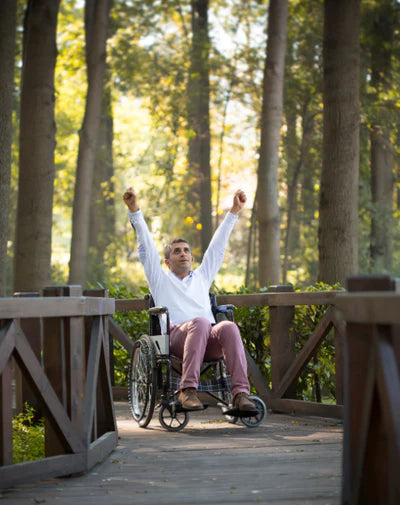
Making Your Wheelchair More Comfortable
24.10.2023
Sitting in your wheelchair without good support or cushioning can make for a very long, uncomfortable day. Unfortunately for wheelchair users the reality of science is that the human body wasn't designed to sit all day long. So, while you may be reliant on your chair for everyday support and mobility, you will also have to find ways to improve your comfort to avoid experiencing any further issues that may arise from it.
Thankfully there are some really easy ways to make sure your chair is serving you well and that you'll be sitting comfortably from now on.
Book a Professional Chair Fitting
If we could give you one piece of advice it would be this. If it’s likely that you’ll be spending a considerable amount of time in your chair we would strongly advise that you seek the help of a specialist, professional to make sure the chair is precisely suitable for the specific needs of your body. Your physiotherapist or medical consultant can help, as can a specialist wheelchair supplier - many of whom, like us, offer bespoke fitting services regardless of your condition or budget.
The more reliant you are on your chair, the more comfortable you will need it to be. However, extra comfort and support can also come with extra cost which is often limiting for individuals. Choosing a wheelchair can be a confusing job given how many different styles and options are on the market, but a specialist can help you sift through the options and find something that will work for you and your body.
Use Additional Cushioning and Support
It is fair to say that the more money you spend, the more comfort and support you should expect from your chair. The easiest and most cost effective way to make your chair more comfortable though is to add a cushion to the seating surface and to the back, and there are many options available to do this.
Using a good, supportive comfortable cushion will immediately decrease the pressure on your bottom and legs and, as a result, will help to reduce any pain and discomfort you might feel in your chair.
These are some of the most comfortable wheelchair cushions we would recommend:
- Seat Cushions
Theracube cushions are ideal for pressure reduction when sitting for long periods, in particular for wheelchair users. The cushion supports the user with an even distribution of weight which helps to reduce the likelihood of ulcers or sores. The Theracube has a rounded front for comfort and is tapered front to back which helps to stop the user sliding forward on the seat and the deep channels allow air to circulate for less heat and sweat build up.
The Ripple Comfort Seat adds overall extra padding to the base, back and arms of your chair or wheel chair. Rounded contour nodules help spread body weight reducing friction and pressure. It has extra lumbar support for the lower back to help improve posture and is also available with an option for coccyx or bonyparts cut out for extra comfort and a bespoke fit.
The removable gel bag in this comfort-gel foam cushion is not only comfortable, but will help to keep you cool too - so it’s ideal for hotter months when heat and sweat can make prolonged periods of time in your chair increasingly uncomfortable. The removable cover is reversible; one side is easy-clean black polyester and the other a luxurious, soft fleece fabric.
- Lumbar Support
While many wheelchairs at the higher end of the price scale have adjustable back and lumbar supports, you may find that your chair does not and that you need to add a support cushion to keep your back upright and pain free. Good lumbar support will also improve core stability as well as relieving pressure on the spine reducing other surrounding pain, for example in the shoulder, neck and arms.
These are our recommendations for the best lumbar support options for wheelchair users and those who have to sit down for prolonged periods of time.
The MEDesign Backfriend is an ergonomic back support combining a back rest and seat support. It has height adjustable back to suit the individual users and offers both lumbar and thoracic support.
The Harley Lumbar Roll with its “D” shaped lumbar roll fits neatly against your lower back and encourages you to sit in a posture-proof position. The dense, firm foam helps you maintain that position whilst seated in your chair - easing related pains and discomfort associated with ‘slouchy’ sitting positions. It is easily fitted using a simple elasticated, buckled strap which works to make sure it doesn’t slip while you’re on the move.
Adjust your chair
Many wheelchairs come with adjustable parts which make the chair fit the individual better. A wheelchair specialist like us can show you exactly how to use these and get you set up in the optimal position for your body.
Adjustable parts will usually include the foot rest, armrests and backrests, although some of the more expensive models will have a larger variety of options to comfort-fit for each individual.
Moving the footrest is a great starting point for finding a better sitting position in the chair and many people find that simply raising the footrest so their knees are higher than their hips makes the chair immediately more comfortable.
Similarly, adjusting the backrest by reclining it just a few degrees can reduce the risk of arching your back and leaning forward, which can result in longer term spine and lower back problems.
Finally, the armrest position should adjust to find you a relaxed rest for your arms and shoulders. If the armrest is set up correctly they will also help to make it easier for you safely get in and out of your chair.
Keep Warm and Dry
As wheelchair user you won’t have the advantage of being able to use an umbrella in the rain or to quickly put on/take off extra layers of warm or waterproof clothing while you’re out and about. You might be very inactive in your chair if you don’t propel it by yourself so you’ll be much more likely to feel cold so make sure you’re well wrapped up, you might want to use a fleece seat lining, or even sit a hot water bottle on your lap.
When it’s wet outside you’ll want to invest in a waterproof wheelchair poncho which covers not just you but your chair as well and is a fantastic accessory to have to hand. It will keep your whole body dry, including your legs and feet, and can be neatly folded down and stored permanently on your chair in a handy wheelchair bag.
Need more support? We're always here to help.
For all your Medical and Homecare supplies give us a call at Mediworld.
We have over 40 years experience in medical, surgical, mobility and home health supplies and we're always on hand to chat if you need support or advice. Follow us on Twitter and Facebook.
Learn More Now
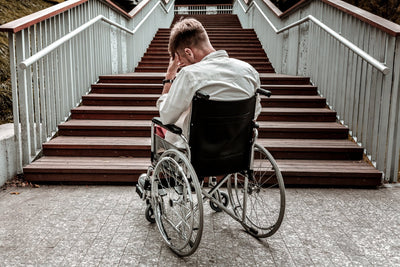
Lockdown easing tips for wheelchair users
23.10.2023
As lockdown measures ease and work and education resumes, we thought we’d share some steps you can do to help you if you are coming out of shielding or starting to go out more. You should still adhere to government guidelines on if you should come out of self-isolation and what preventative measures you should adhere to. The latest government guidelines can be found here.
One step at a time
It can be hard to leave your home if you have been shielding for a while. Our advice would be to take it one step at a time, set some small goals for yourself to get acclimatised to being back outside again. Perhaps set one day a week to try going outside, take it at your own pace.
Stick to your local area
If you are starting to leave your home and spending more time outside then try staying in your local area to start with. That way you don’t have to try to worry about transport, toilets being open or the weather turning. If you are planning on going out why not visit your local park or a quiet and accessible open space where social distancing should be easier.
Have supplies
Across the UK face coverings are mandatory in shops and public transport. If you are going outside you should have a suitable face covering on if you are coming into contact with other people. We strongly advise that if you can wear a face covering then please do so. However, if you are a disabled person who is exempt then you might like to consider looking at our printable resources that let others know you cannot wear a face covering. If possible, it would be beneficial to also have some hand sanitiser or gloves to use when leaving and entering your home.
Look after your mental health
We understand that this lockdown period has been stressful and could have negatively affected your mental health. It is important to take time for yourself, especially if you are dealing with fears or anxiety as lockdown eases. Have a look at this article that tackles different ways to help with anxiety and mental health during and post lockdown, it has some great advice for those you are/were shielding.
Keep up to date on work and school
It can be difficult to imagine returning to education and work if you have been shielding for months. Things seem to be changing fairly regularly so it is important to get in touch and keep up to date on changes in health and safety policies as well as starting back dates. Getting back to work and school will also help you with getting back into a routine outside of the house.
If you have a family and are concerned about coming out of lockdown then Great Ormond Street Hospital for Children NHS talks on ways you can tackle your fears.
Continue any new routines or hobbies
If you started a new hobby or had a lifestyle change in routine during your time at home then try to keep it up, as this will help maintain your routine as the world around you changes again. It will give you an ongoing sense of achievement, which can help your mental health and overall mood. If you are looking for hobbies or activities to pick up why not check out the Euan’s Guide Forum?
Picking up social lives
As we move out of lockdown it’s going to be possible to start picking up our social lives again, with some changes. Some of us are desperate to do so – but others will be nervous – or unable to do so because of their situations. If you are part of a social group doing an activity together, try and plan ways for people who aren’t ready for face to face meetings to still take part. We recommend video calls as they have been great for keeping connected despite the physical distance between us.
Overall, take coming out if lockdown at your own pace. For many of us, coming out of lockdown is not a choice. For many of us, the prospect of returning to “normal” carries with it a need to weigh up the potential safety risks to ourselves and family. Hopefully some of this advice will come in useful and made the transition from shielding slightly easier. If you are interested in other’s experiences during this lockdown period consider reading some of our Voices of Covid blog series.
Learn More Now
